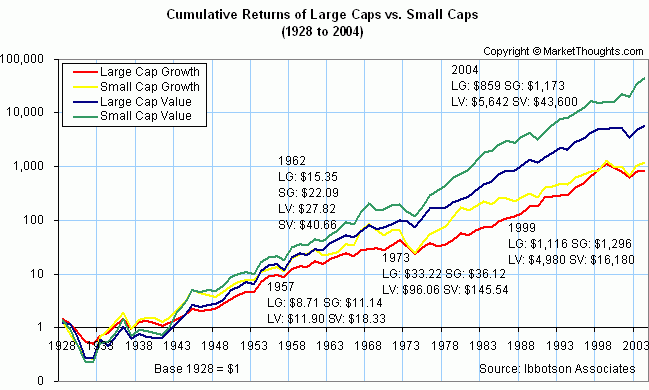Performance of Value versus Growth Stocks
Post on: 7 Июнь, 2016 No Comment

Your e-mail has been sent.
Whenever the topic of portfolio design is discussed, you can be sure that the issue of value investing versus growth investing will come up. It is an issue when considering how to invest in U.S. stock mutual funds and non-U.S. stock mutual funds.
The term value suggests that the investor is buying stock that is relatively less expensive, as opposed to stock that is relatively more expensive. The stock of a company that is classified as a “value stock” typically has a lower price-to-earnings ratio, which simply means that the stock currently has a lower price per share relative to the company’s earnings per share. Think of it as investing in the home that needs repair versus putting more money down for the glitzy house on the hill. Very simply, value stocks are priced more attractively. The real question is whether or not value stocks tend to outperform growth stocks.
Growth stocks are just the opposite. They have higher price-to-earnings ratios; thus, an investor who purchases a growth stock is paying a higher price per share because he or she believes the stock price might go even higher.
Clearly, value and growth are relative measures. In fact, evaluating a stock’s price (in value versus growth terms) is much like trying to determine if the price of a home you are interested in buying is priced right. Rather than wax philosophical, let’s focus on the results of actual value and growth stock market indexes.
Does It Make a Difference?
As reported in Table 1, the 31-year annualized return of growth-oriented large-cap U.S. stock was 9.91 percent (which represents the average of the Dow Jones Large Cap Growth Index and the Dow Jones U.S. Large Cap Growth Index). The Dow Jones U.S. indexes were formerly the “Wilshire” Indexes. The term cap is an abbreviation of capitalization. Capitalization is the way in which stocks are size classified (large-cap, midcap, small-cap). Capitalization is calculated by multiplying the current price of a stock by the number of shares that have been sold to investors.
The two value-oriented large-cap U.S. stock indexes in this study (Dow Jones Large Cap Value Index and Dow Jones U.S. Large Cap Value Index) had an average return of 11.66 percent over the period 1980–2010. Large-cap U.S. stock with a value orientation had a higher 31-year average return than large-cap U.S. stock with a growth orientation. This difference in favor of value is referred to as a value premium. There was a value premium among large-cap U.S. stocks, which translated into a total dollar premium of over $118,000 during this particular 31-year period.
The 31-year average annualized return of two midcap value indexes (Dow Jones Mid Cap Value and Dow Jones U.S. Mid Cap Value) was 13.51 percent, considerably better than the 11.27 percent average return of the combined midcap growth indexes. The difference in performance amounted to a value premium of over $234,000.














